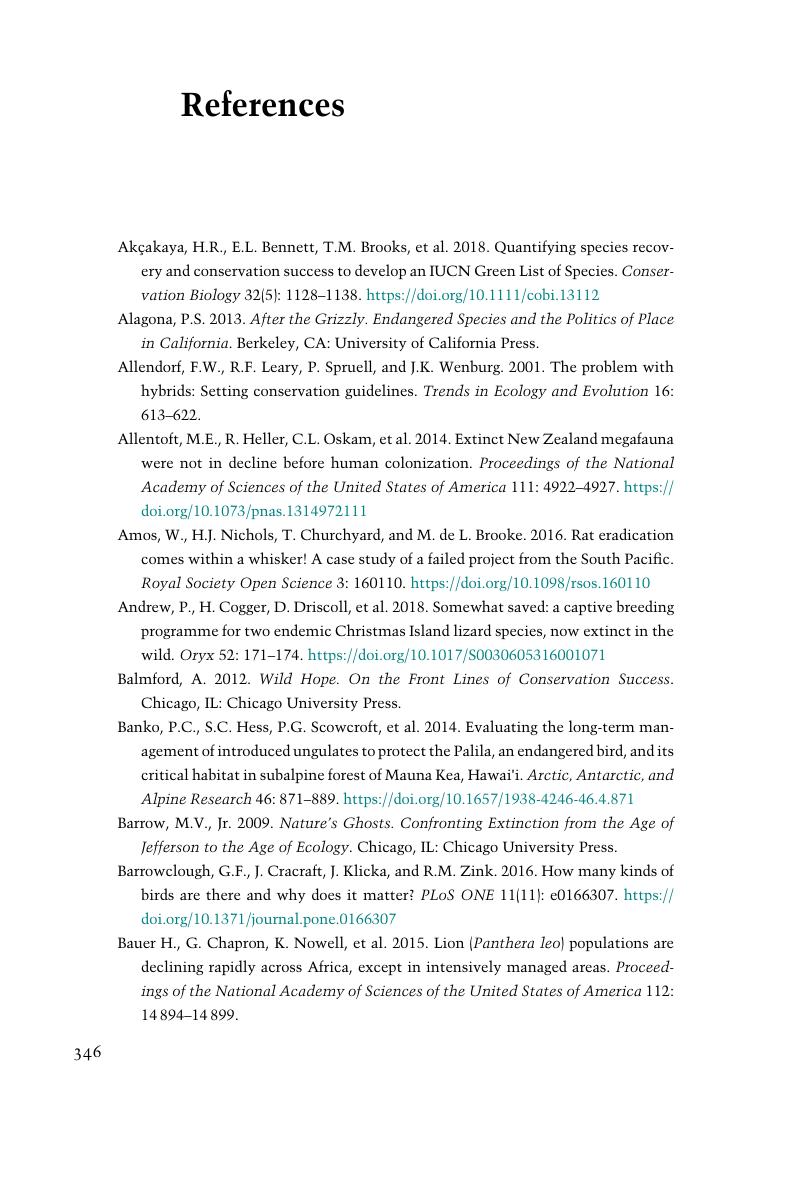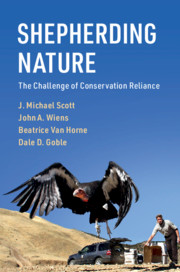Book contents
- Shepherding Nature
- Shepherding Nature
- Copyright page
- Contents
- Preface
- Acknowledgments
- 1 Extinction and the Challenge of Conservation Reliance
- 2 The Conservation Spectrum
- 3 The Genesis of Conservation Reliance and the Language of Conservation
- 4 What Are the Threats?
- 5 Emerging Threats in a Rapidly Changing World
- 6 The Role of Policy and Law
- 7 What’s in the Conservationist’s Toolbox: Species-Centered Approaches
- 8 Expanding the Conservationist’s Toolbox: Going Beyond Species
- 9 Conservation Reliance Is a Human Issue
- 10 Making Tough Decisions: Prioritizing Species for Conservation
- 11 Being a Good Shepherd
- Book part
- Essay Contributors
- References
- Index
- References
References
Published online by Cambridge University Press: 28 February 2020
- Shepherding Nature
- Shepherding Nature
- Copyright page
- Contents
- Preface
- Acknowledgments
- 1 Extinction and the Challenge of Conservation Reliance
- 2 The Conservation Spectrum
- 3 The Genesis of Conservation Reliance and the Language of Conservation
- 4 What Are the Threats?
- 5 Emerging Threats in a Rapidly Changing World
- 6 The Role of Policy and Law
- 7 What’s in the Conservationist’s Toolbox: Species-Centered Approaches
- 8 Expanding the Conservationist’s Toolbox: Going Beyond Species
- 9 Conservation Reliance Is a Human Issue
- 10 Making Tough Decisions: Prioritizing Species for Conservation
- 11 Being a Good Shepherd
- Book part
- Essay Contributors
- References
- Index
- References
Summary

- Type
- Chapter
- Information
- Shepherding NatureThe Challenge of Conservation Reliance, pp. 346 - 378Publisher: Cambridge University PressPrint publication year: 2020



